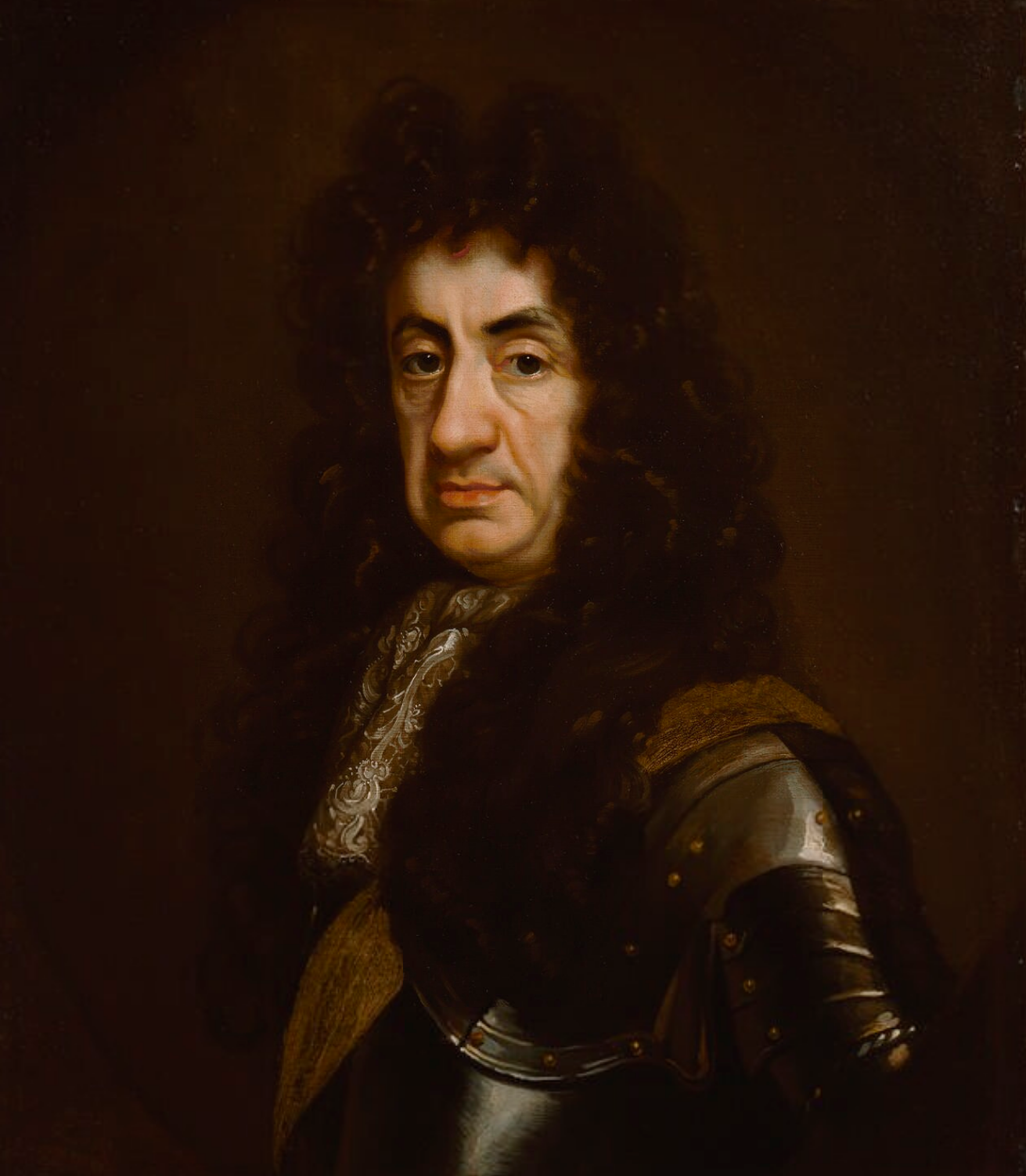14th February 2021
King Charles II was buried on this day in 1685. He had ruled for twenty-five years in a period which came to be known as the Restoration, as his crowning marked the return of the monarchy to England. For many, this was a return to normality after the years of the Interregnum when England was a republic led by Oliver Cromwell.
Charles was the eldest surviving son of Charles I and Henrietta Maria, and was twelve years old when the first English Civil War began. As a young teenager, he took part in his father’s battle campaigns but as the situation worsened for the Royalists, young Charles, Prince of Wales and heir to his father’s throne, was forced to leave England for his own safety. He fled to France, where his mother Henrietta Maria was living in exile under the protection of her nephew – the eight year old Louis XIV of France.
Charles was eighteen and living with his sister Mary and her husband William II, Prince of Orange, at The Hague when his father was executed in 1649 and England declared a Republic. Just days later, Scotland declared the young Charles ‘King of Great Britain, France and Ireland’ and promised they would help him retake his English crown. There was just one catch – Charles would have to agree to establish Presbyterianism as the national religion throughout Britain and Ireland.
With few other options, Charles reluctantly agreed to the Scots’ terms – boosting his support in Scotland but making him enormously unpopular in England. After two unsuccessful battles with Cromwell’s forces and disillusioned with the Scots, Charles fled. Avoiding capture by the English Parliamentarians after his defeat at the Battle of Worcester, Charles famously hid for a day in an Oak tree, before eventually escaping in disguise to France. He would spend almost the next decade in exile.
Despite further attempts to mount an army and return to England, Charles’s cause appeared to be lost. It was the death of Oliver Cromwell that proved to be the catalyst that paved the way for his return. Cromwell had led the Parliamentarian armies in repeated triumphs against Charles I’s forces, and he was named Lord Protector of the country once it had been proclaimed a republic. This had made Oliver Cromwell essentially king in all but name. Upon his death, his son Richard became Lord Protector.
At this time, there seemed little hope for Charles to regain his father’s throne. But Richard Cromwell proved inexperienced and unfit for the role of Lord Protector and stepped down only nine months later. What followed was a period of unrest and the tide turned in Charles’s favour as the public desire for stability grew. He signed the Declaration of Breda in April 1660, which made a few promises that included religious toleration and a pardon for crimes committed during the Civil War for those who recognised him as the lawful King – the exception to this were the regicides that killed his father.
Charles also promised that he would rule alongside Parliament, co-operating with them. They wanted to ensure there would be no more years of Personal Rule, after it had been so abused by Charles I when he refused to call a Parliament for eleven years, believing in his divine right to rule – and driving the country down the path to civil war.
Charles II finally returned to England as king on the 29th of May 1660 – his thirtieth birthday. This Restoration was not only a return of the monarchy, but also a cultural shift away from the ideals of Puritanism. His hedonistic court was a marked contrast to the years of the Interregnum, and why Charles is often known as the ‘Merry Monarch’, despite the horrors of a major outbreak of plague in 1665, and the Great Fire of London in 1666.
In 1662 Charles, now King of England, married Catherine of Braganza, daughter of the King of Portugal. They had no children together, but Charles had at least thirteen illegitimate children with a number of mistresses. As a Catholic in Protestant England, Catherine was an unpopular queen, and a target for anti-Catholic sentiments. Lacking a legitimate son, Charles’s heir presumptive was his brother James – who was also Catholic, causing a political storm and resulting in several failed attempts to have him removed from the succession.
Charles died on the 6th February 1685 after suffering a stroke four days earlier. The suddenness of his death led many to suspect poisoning, however modern doctors have suggested it was most likely caused by kidney failure - possibly a consequence of Charles’s interests in experimenting in his laboratory with mercury.
On his deathbed, Charles converted to Catholicism – which may explain why his funeral was such an unusually low key affair for a king. He was succeeded by his younger brother James II, the last Catholic king of England.
Image: King Charles II, studio of John Riley, c.1680-1685, NPG 3798, © National Portrait Gallery, London
